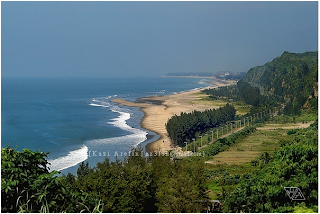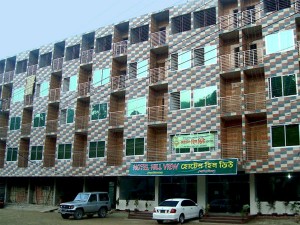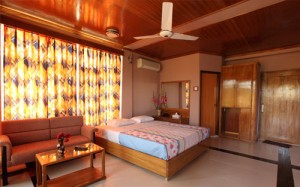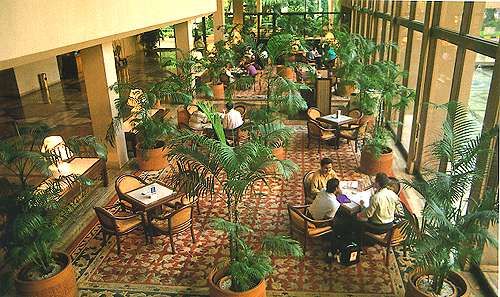Bangabandhu Bridge, commonly called the Jamuna Multi-purpose Bridge (Bengali: যমুনা বহুমুখী সেতু Jomuna Bohumukhi Shetu) is a bridge opened in Bangladesh in June 1998. It connects Bhuapur on the Jamuna River's east bank to Sirajganj on its west bank. It was the 11th longest bridge in the world when constructed in 1998 and currently the 6th longest bridge in South Asia.
It was constructed over the Jamuna River, one of the three major rivers
of Bangladesh, and fifth largest in the world in discharge volume.
The bridge established a strategic link between the eastern and
western parts of Bangladesh. It generates multifarious benefits for the
people and, especially, promotes inter-regional trade in the country.
Apart from quick movement of goods and passenger traffic by road and
rail, it facilitated transmission of electricity and natural gas, and
integration of telecommunication links. The bridge is on the Asian
Highway and the Trans-Asian Railway
which, when fully developed, will provide uninterrupted international
road and railway links from southeast Asia through Central Asia to
northwest Europe.
History of construction
Jamuna Multi-purpose Bridge showing
8 rows of bolts for 4 rails
The river Jamuna (Brahmaputra), along with the lower stretch of the Padma (Ganges)
divides Bangladesh into nearly two equal halves. Until now all road and
rail communication between the two parts of the country has had to rely
on time-consuming ferry services that were often disrupted because of navigability
problems. The need for a bridge over the Jamuna River was felt,
especially by the people living in northwestern Bangladesh, for a long
time. This perceived need did not go unnoticed by the policy makers. The
people and successive governments longed to bridge the mighty Jamuna
and thereby integrate the communication systems of the region.
Popular leader Maulana Abdul Hamid Khan Bhashani
first raised the demand for construction of the Bangabandhu Bridge at a
political level in 1949. In the 1954 provincial elections of East
Pakistan, the 21-point manifesto of the united front contained a demand
for the bridge. On January 6, 1964, Mohammad Saifur Rahman, a member
from Rangpur
in the Provincial Assembly inquired about government's intentions with
regard to the construction of a bridge over the Jamuna. On July 11,
1966, Shamsul Haque, another member from Rangpur in the same Assembly,
moved a resolution for the construction of the bridge and the house
adopted it unanimously.
Accordingly, a preliminary feasibility study was carried out in 1969 by Freeman Fox and Partners of UK. They recommended a rail-cum-road bridge
near Sirajganj with an estimated cost of $175 million. The estimates
were preliminary and a more detailed study was recommended. On the other
hand, in his address to the nation over radio and television on the eve of general election in Pakistan in 1970, the Awami League leader Sheikh Mujibur Rahman
mentioned the construction of Bangabandhu Bridge as an election pledge
of his party. But all efforts were interrupted due to political unrest
and liberation war.
After Bangladesh attained independence in 1971, the new government publicly stated its intention in 1972 to construct a bridge over the Jamuna and budgetary provisions were kept for the purpose in the 1972-73 budget. On being invited by the Bangladesh government, the Japan International Cooperation Agency (JICA) funded a feasibility study through Nippon Koei Co. Ltd. in 1973 on the construction of a road-cum-rail bridge over the Jamuna.
The JICA
study, completed in 1976, concluded that the Jamuna project would cost
$683 million with an economic rate of return (ERR) of only 2.6%.
Considering that the project was not technically and economically
viable, the government abandoned it. The government revived it in 1982
and commissioned a new study to determine the feasibility of
transferring natural gas to western parts of the country across the
Jamuna. The study concluded that an independent gas connector was not
economically viable. However, the consultants made an assessment of the
engineering feasibility and cost of a combined road-cum-gas transmission
bridge, which introduced the concept of a multipurpose bridge.
It was estimated that a 12-km long bridge with three road lanes would
cost $420 million. Upon consideration of the report, the cabinet made a
decision to take immediate steps in pursuit of the project.
The Jamuna Multipurpose Bridge Authority (JMBA) was set up by an ordinance promulgated by the then President Hussain Muhammad Ershad
on July 3, 1985 to implement the project. For mobilisation of domestic
resources, another ordinance was promulgated by which a Bangabandhu
Bridge surcharge and levy were introduced. A total of Tk 5.08 billion
was mobilised in the process till its abolition.
In 1986, phase-I feasibility study for the bridge was carried out when the site between Sirajganj
and Bhuapur (Tangail) was found to be the best. Between 1987 and 1989,
the phase-II feasibility study was carried out when a
road-cum-rail-cum-power bridge was found both economically and
technically viable. Funding arrangements were finally made with IDA, ADB and JBIC (formerly known as OECF) of Japan
by the government of Bangladesh in 1992. Tenders were invited through
international bidding for construction contracts in 1993. Contracts for
the bridge, river training work
and two approach roads were awarded in March 1994. The foundation stone
of the bridge was laid on April 10, 1994 by the then Prime Minister
Begum Khaleda Zia. Physical implementation of the project commenced on
October 15, 1994, and all the components except gas transmission line
were completed by June 1998. The bridge was opened for traffic on June
23, 1998 by the then Prime Minister Sheikh Hasina the daughter of Bangabandhu Sheikh Mujibur Rahman.
Jamuna Multipurpose Bridge was constructed by Hyundai Heavy Industries at a cost of $696 million. The cost was shared by IDA, ADB, OECD, and the government of Bangladesh. Of the total, IDA, ADB and OECD supplied $200 million each through a loan with 1% nominal interest and the remaining $96 million was borne by Bangladesh.
The main bridge is 5.63 km long with 47 main spans of approximately 100 meters and two end spans of approximately 65 metres. Connected to the bridge are east and west approach viaducts each with 12 spans of 10 meter length and transition spans of 8 metres. The total width of the bridge deck is 18.5 metres.
The river crossing was designed to carry a dual two-lane carriageway, a dual gauge (broad and metre) railway, a high voltage (230 kV) electrical inter connector, telecommunication cables and a 750 mm diameter high pressure natural gas pipeline. The carriageways
are 6.315 meters wide separated by a 0.57 metre width central barrier;
the rail track is along the north side of the deck. On the main bridge,
electrical inter connector pylons
are positioned on brackets cantilevered from the north side of the
deck. Telecommunication ducts run through the box girder deck and the
gas pipeline is under the south cantilever of the box section. The
bridge has been built by Hyundai Engineering and Construction (Korea) as a 'design and build' contract. TY Lin Assoc. of San Francisco carried out the design as a sub-contractor for Hyundai. The approach roads were constructed by Samwhan Corporation (Korea).
Considering the fact that the width of the main channel
does not exceed 3.5 km, and after making allowances for floods, a
bridge length of 5 km was considered adequate. In October 1995, one year
after the start of physical work, a bridge length of 5.63 km, instead
of a flood-width of the river at 14 km, was finalised. This narrowing
was essential to keep the overall project cost within economic
viability. It has, however, required considerable river training work to keep the river under the bridge.























